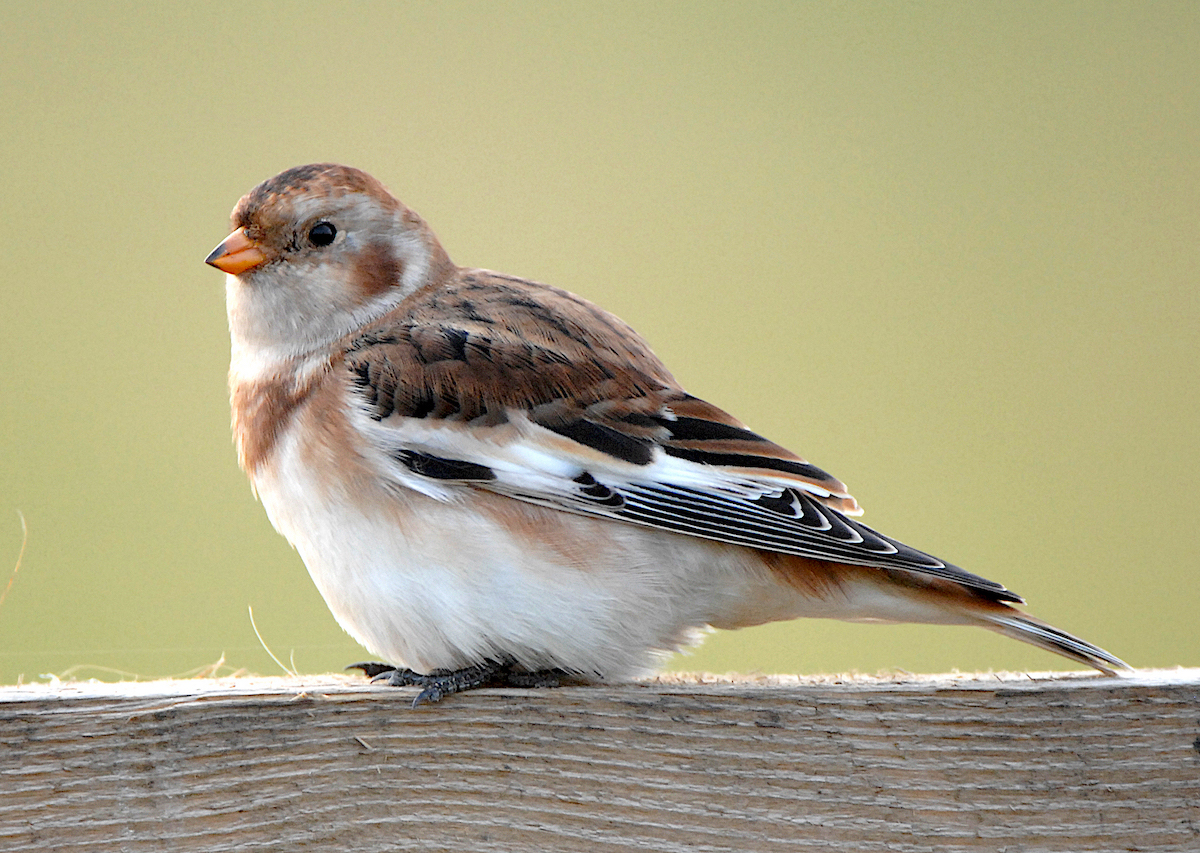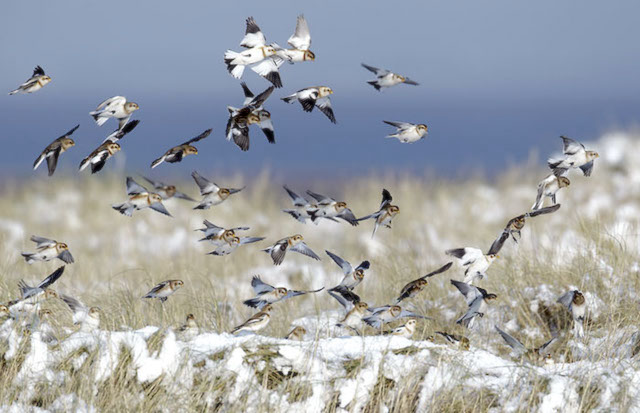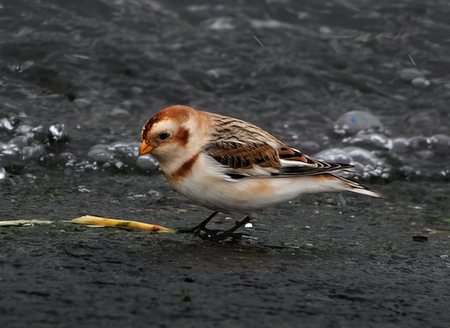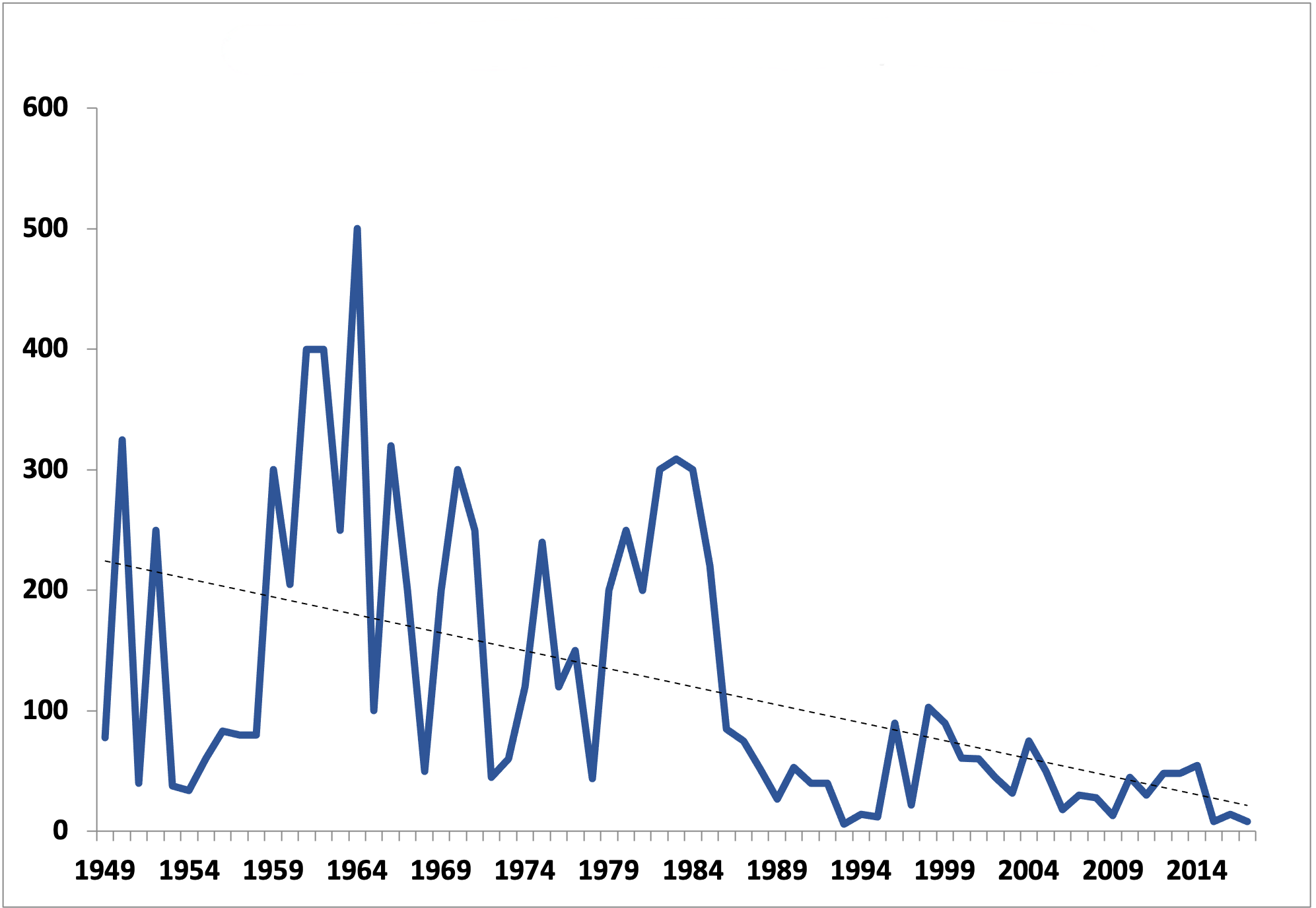Snow Bunting Plectrophenax nivalis
Icelandic form insulae a regular fairly common winter visitor and passage migrant on coast, mainly Sep-Apr, exceptional in summer. Scarce but fairly regular inland. Nominate Scandinavian form a scarce winter visitor and passage migrant.



The number of wintering Snow Buntings and the sites they use can change considerably from year to year. The Atlas mentions that “exceptional concentrations of up to a thousand have occurred in some years in the past” but during the 1980s annual totals in the county rarely reached 1000. During the 1990s numbers were much lower, usually several hundred per annum, with a peak of 500. Gregory (2018) provided a useful summary of the peak day counts per annum of Snow Buntings at Gibraltar Point from 1949- 2018 (below). The peak was around 500 in 1963 and since that time numbers have fallen steadily not exceeding 100 since the late 1990s.

Snow Buntings at Gibraltar Point: peak day counts, 1949-2017/18
LBR reports for the 10 years to 2019 show that the total peak site counts across the county ranged from 94 in 2016 to 667 in 2013 with an average of around 350 per year. The chief wintering area is the north-east coast between Cleethorpes and Mablethorpe, and in the south-east, Gibraltar Point. Birds also occurr irregularly from Winterton on the Humber round to Gedney on The Wash. The best three sites, which were the only ones to hold birds in each of the 10 years, were Cleethorpes which averaged 100 birds a year and had the two best flocks, both of 200 in December 2011 and December 2013 (but only 15 in 2019), Saltfleetby-Theddlethorpe Dunes NNR which averaged 60 per year (range: 24-120) and Gibraltar Point averaging 30 (range: 3-55). Between them these three sites held 55% of the peak counts over the 10 years. There has recently been a run of relatively poor years from 2016-2019, averaging 160 per year but a bad winter may see numbers rise again.
Reference
Gregory, G.(2018). A Preliminary Phenological Analysis of Ten Species or Subspecies of Wintering Birds at Gibraltar Point National Nature Reserve from the Winter of 1949/50 to the Winter of 2017/18. Lincolnshire Bird Report 2018: 205-210.
(Updated with reference to the new Birds of Lincolnshire (2021) January 2023)
